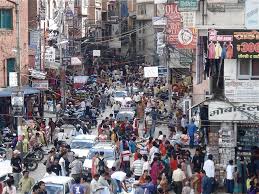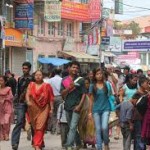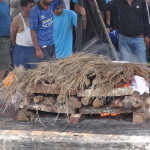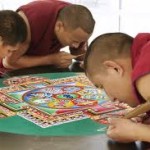Kathmandu is without equivocation the most ‘foreign’ foreign city I have ever visited. Everything about it, its look, its feel, its sound, its smell, its texture – is different. Nepal, which is a landlocked country between China and India, is one of the poorest counties in the world and seems to be struggling with its identity, as is its capital, Kathmandu. Its infrastructure is in disrepair. Thousands of cars, motorcycles/scooters and pedestrians all trying to get somewhere, but with no traffic lights or signs and no lines in the middle of the road, the congestion in this city of four million is unimaginable. Kathmandu is a cultural fusion of varying economic means, religions and castes. Yes, it has a caste system where people are divided into four very distinct statuses, and if you were born in the bottom caste, there is no working hard and moving up; no matter what you do, you’ll remain in the bottom caste. Eighty percent of the population is Hindu, fifteen percent is Buddhist, with Muslims and Christians making up the last five percent. But it seems that religious differences are better tolerated here than in most places in the world.
Buildings in the city are typically low, brick or plaster facades with tile or tin roofs. Sometime they have a door; sometimes it’s just a curtain that covers the opening. Everything looks brown or gray, as most of the roads are dirt and all the traffic stirs up lots of dirt and grime. I see bamboo scaffolding on a few buildings that are being refurbished. Telephone pole spaced every few hundred yards, have hundreds of wires coming from them and going in all directions. People are dressed in various styles, most of the men are in ‘western’ attire, although the older men will wear a Dhaka topi – a hat, but the majority of women wear saris or other more traditional clothing. If a woman is married, she will wear red, single women can wear any color but red.
We visited Pashupatinath, the oldest Hindu temple in Nepal; it is here that we witnessed a cremation. In this case it was a young boy whose body was cover as he lay by the river. A lady, who we assumed to be the mother, was nearby wailing and being comforted by her friends, as she looked at her son for the last time. The body was taken to a spot next to the river where a funeral pyre was prepared. The body was burned and the ashes were pushed into the river. This river flows into the Ganges River in India, which the Hindus believe to be holy. It was a very moving ceremony.
We next visited Bhaktapur, a city within Kathmandu, and the oldest city in Nepal. Its history goes back to the 7th century, when it was the capital of Nepal. The city is filled with both Hindu and Buddhist shrines and has an incredible history of kings, art and war. We attended a lecture on the art of Mandala, the use of millions of grains of colored sand used by Tibetan Monks to create a‘circle of life’ painting. It take months to complete just one piece and when it’s complete, it is dumped into a river, so it can spread its goodness to the rest of the world. The samples that we were shown were beautiful – and powerful.
Our final stop for the day was at Swayambhunath, more simply the ‘Monkey Temple’, due to the number of monkeys that inhabit the oldest of Buddha temples in Nepal, dating back to the 5th century. It tells the history of the creation of the city of Kathmandu and holds many artifacts that are particularly important to the Buddhist religion. It is high on a hill and provides a sweeping view of the Kathmandu valley.
With all its foreignness, I ended up liking Kathmandu a great deal, because of the people. They were always friendly, courteous and always willing to help now matter what the circumstance. They work hard, especially the women, and cope in a world in which most of us would surly struggle.
Our incredible adventure is coming to and end, so this will be my last post from Nepal. We leave tomorrow (Friday) and get home Saturday. Since I’ll have 30+ hours on planes and in airports, I’ll try to put together some overall perspectives from Patrick and me and post them on Monday.
Thanks for following along.



